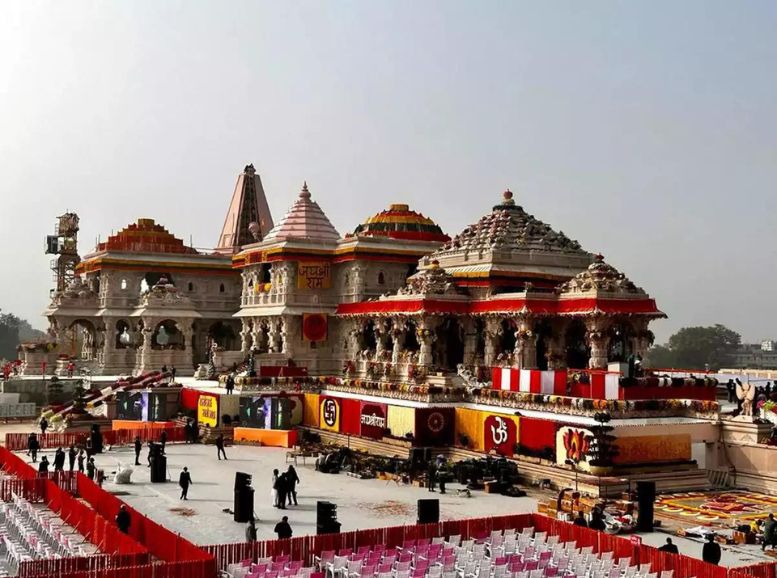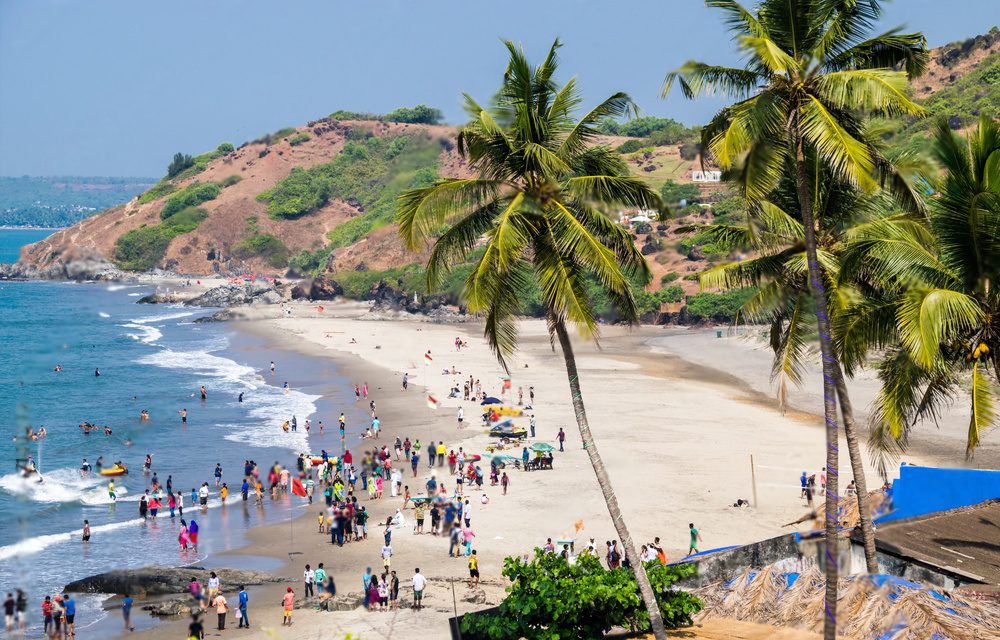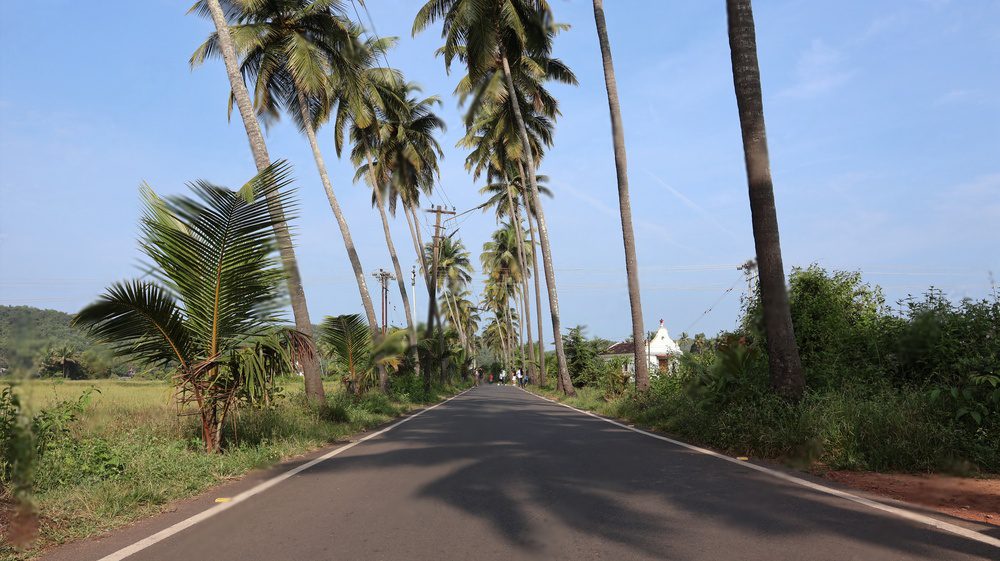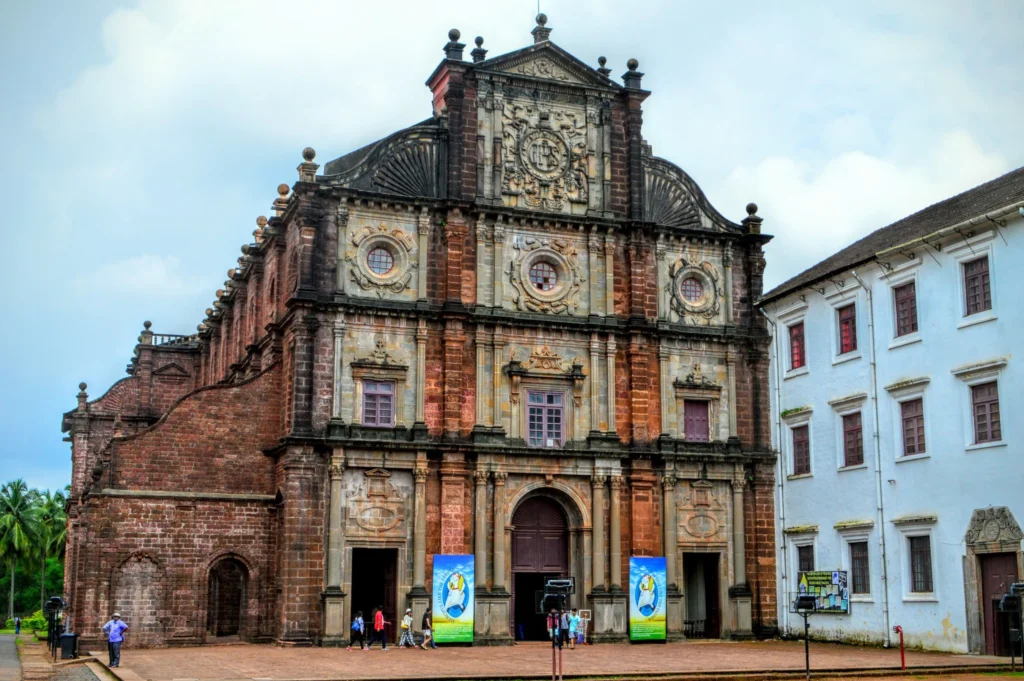Ayodhya, an Indian city situated on the banks of the sacred Sarayu River in Uttar Pradesh, captivates visitors with its rich tapestry of mythology, history, and spiritual significance. Revered by millions worldwide, Ayodhya is believed to be the birthplace of Lord Rama, a central figure in Hinduism.
Ayodhya’s legacy is deeply intertwined with the Ramayana, an epic poem that recounts the life and adventures of Lord Rama. This ancient city transcends its mythological importance, offering a vibrant cultural and spiritual experience. Magnificent temples, serene ghats along the river, and bustling markets brim with life, each element contributing to Ayodhya’s unique character.
How to reach:
- Air: The closest airports are Lal Bahadur Shastri International Airport in Varanasi (175 km) and Chaudhary Charan Singh International Airport in Lucknow (140 km). Taxis and buses connect both airports to Ayodhya.
- Train: Ayodhya Junction offers convenient train connections to major Indian cities. Rickshaws and taxis are readily available at the station for onward travel within Ayodhya.
- Road: Ayodhya boasts good road connectivity to Uttar Pradesh and neighboring states. Regular buses operated by public and private companies travel between Ayodhya and cities like Lucknow, Varanasi, and Gorakhpur. Taxis and self-driving are also options.
- Local Transport: Auto-rickshaws and cycle-rickshaws are the most common ways to navigate Ayodhya. Taxis offer a comfortable alternative. The walkable nature of the city allows you to explore many sights at your own leisurely pace.
Best time to visit:
- Winter Wonderland (October – March): Embrace the delightful winter in Ayodhya, with cool and comfortable weather ideal for sightseeing. Explore the city’s temples, ghats, and other attractions without the summer heat. This period often coincides with vibrant festivals like Diwali and Ram Navami, adding to the festive spirit.
- Sizzling Summers (April – June): Ayodhya experiences scorching temperatures during summer. If you must visit during this time, pack light cotton clothing, sunscreen, and stay hydrated to handle the heat.
- Monsoon Magic (July – September): Moderate to heavy rainfall graces Ayodhya during the monsoon. While the rain brings relief from the heat and paints the city a lush green, it can also lead to waterlogging and travel disruptions. If you don’t mind the rain, you’ll experience Ayodhya’s natural beauty at its peak.
Attractions:
Ram Janmabhoomi Temple:
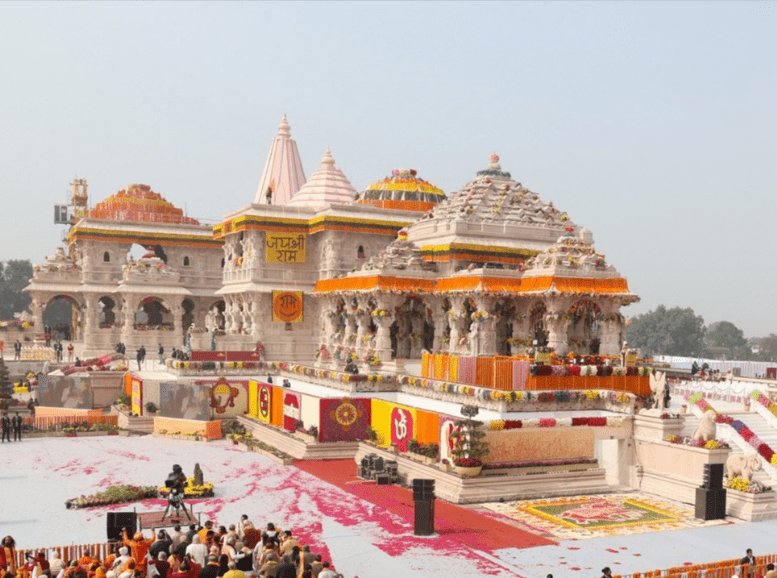

The Ram Janmabhoomi Temple embodies the enduring devotion to Lord Rama. Revered as his birthplace, this sacred complex encompasses not only the main temple but also the Hanuman Garhi, dedicated to Rama’s faithful lieutenant Hanuman. The Kanak Bhawan, a treasury rumored to hold immense riches, is another notable structure within the complex. Pilgrims from across the globe visit this holy site to seek blessings from Lord Rama and experience the profound spiritual energy that permeates the grounds. The intricate architecture, the melodious chanting of hymns, and the daily rituals combine to create an atmosphere of immense peace and upliftment.
Hanuman Garhi:
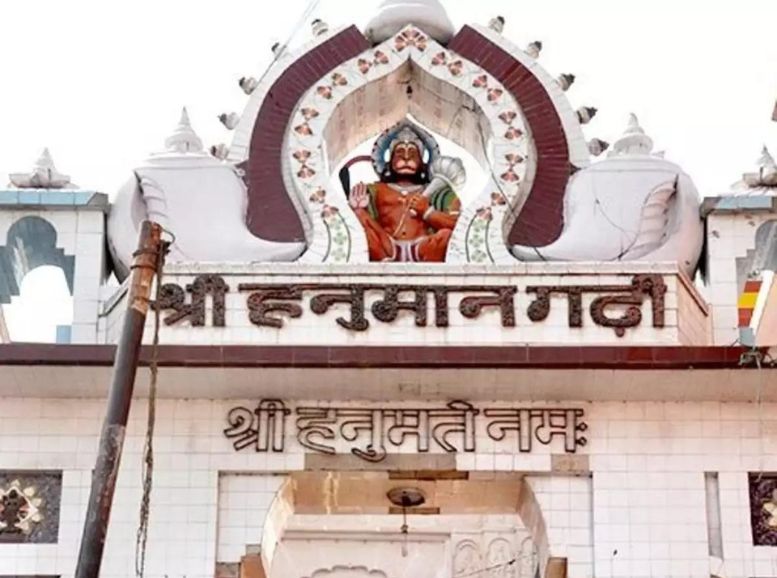

Crowning a hill in Ayodhya, Hanuman Garhi reigns as a revered temple dedicated to Lord Hanuman. Enshrined within legend, Hanuman is said to have resided here, keeping watch over the sacred Ram Janmabhoomi. The architectural grandeur of the temple itself stuns visitors, while the tranquil atmosphere fosters a sense of peace. The climb to Hanuman Garhi offers a pilgrimage in itself, culminating in breathtaking panoramic vistas of Ayodhya and the Sarayu River below, forever etching the experience in the visitor’s memory.
Kanak Bhawan: Ayodhya
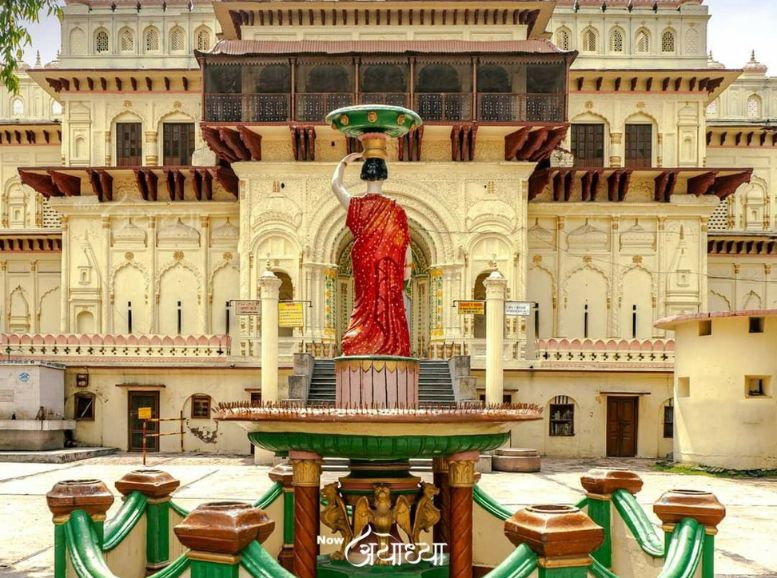

Renowned for its exquisite idols of Lord Rama and Sita, Kanak Bhawan (House of Gold) is a captivating temple nestled within Ramkot area. Also known as Sone-ka-Ghar, this temple draws devotees seeking blessings from the divine couple. Intricate carvings and designs embellish the architecture, transforming the structure into a masterpiece that reflects the enduring love story of Rama and Sita.
Nageshwarnath Temple:
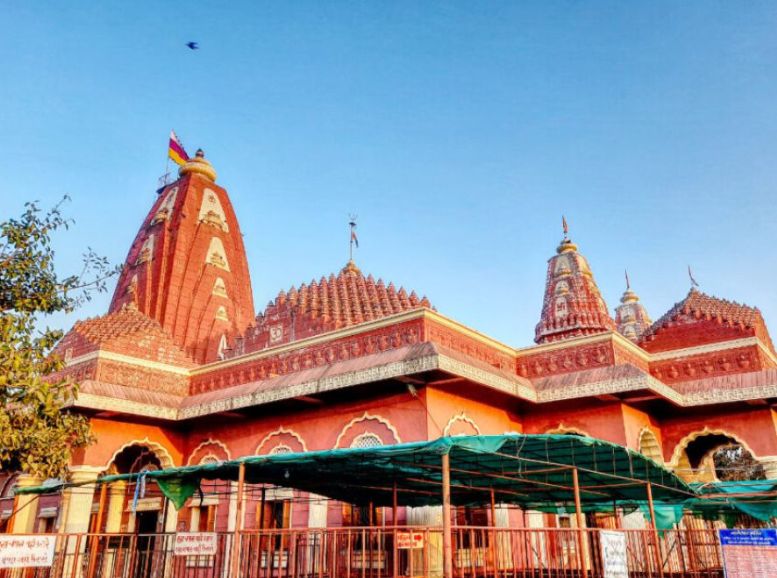

Shrouded in legend, the Nageshwarnath Temple, situated close to Hanuman Garhi in Ayodhya, is an ancient shrine dedicated to Lord Shiva. According to local tradition, the temple was founded by Kusha, son of the revered Lord Rama. Enhancing the site’s spiritual significance, the temple complex incorporates a sacred pond known as Surya Kund. Devotees frequent Nageshwarnath Temple to seek blessings from Lord Shiva and experience the profound tranquility that permeates the grounds.
Moti Mahal:
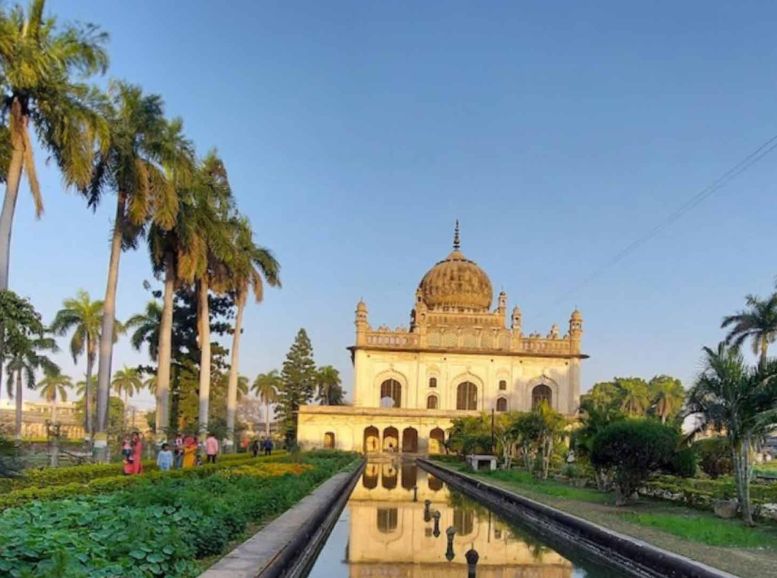

Originally built by Nawab Shuja-ud-Daula, the Moti Mahal stands as a testament to the architectural marvels of the Mughal era. This splendid palace is renowned for its grandeur and historical significance. Intricate motifs and designs adorn the palace, reflecting the city’s rich cultural heritage.
Dashrath Mahal:
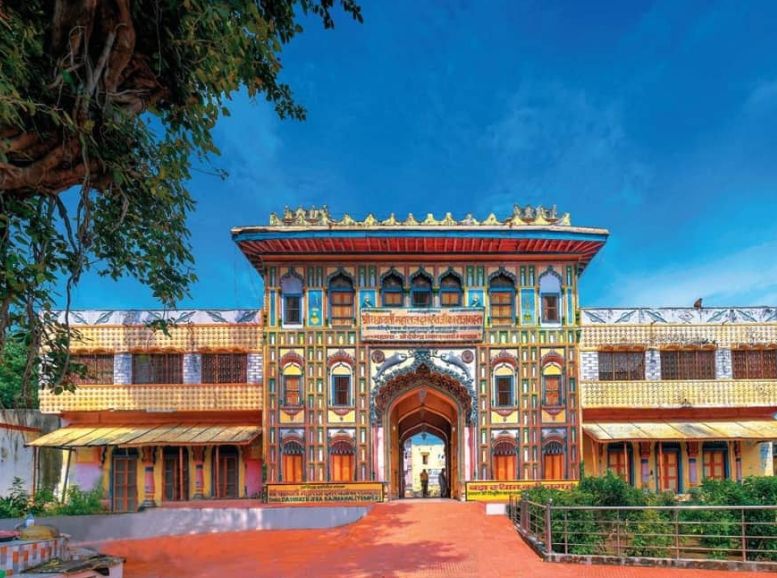

Shrouded in legend, Dashrath Mahal in Ayodhya is a significant pilgrimage site named after Lord Rama’s father, King Dasharatha. The intricate carvings and imposing structure speak volumes about Ayodhya’s historical grandeur. Devotees flock to Dashrath Mahal to pay their respects and immerse themselves in the city’s rich religious heritage.
Ramkatha Park:
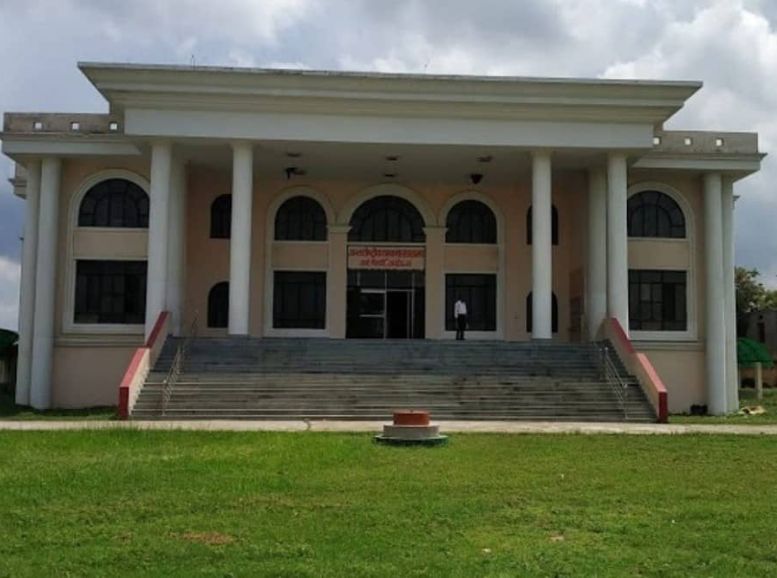

Ramkatha Park offers a tranquil escape. Dedicated to Lord Rama’s life and teachings, the park comes alive with sculptures and murals portraying iconic scenes from the Ramayana. Devotees and visitors alike can wander through the park, absorbing the spiritual atmosphere and reliving the epic tale.
Ramayan Mela:
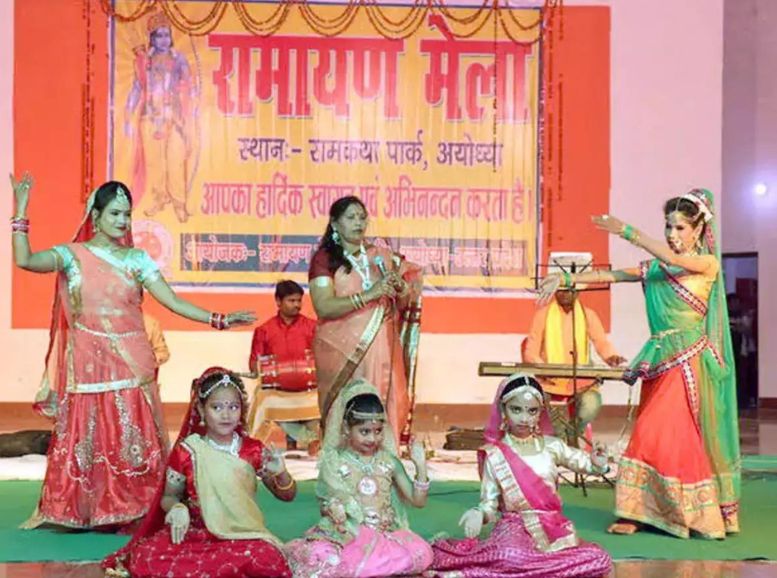

Ayodhya bursts into color each November or December during the Ramayan Mela. This annual festival celebrates the epic Ramayana, attracting devotees and tourists from across the globe. Witness vibrant cultural performances that bring the story of Lord Rama to life, and delve into the rich tapestry of Ayodhya’s cultural heritage. The Ramayan Mela serves as a powerful reminder of the enduring legacy of the Ramayana in Hinduism.
Local Experiences:
Attend the Aarti at Sarayu Ghat: Experience the mesmerizing Aarti ceremony held at Sarayu Ghat in the evening. Witness the lamps being lit, the chanting of hymns, and the rhythmic beats of the drums as the river comes alive with spiritual fervor.
Explore the Local Markets: Take a stroll through the bustling local markets of Ayodhya, such as the Chowk and Naya Ghat areas. Shop for traditional handicrafts, religious artifacts, and souvenirs to take back home. Don’t forget to bargain for the best deals!
Try Local Cuisine: Indulge in the delicious local cuisine of Ayodhya. Don’t miss out on the famous street food such as chaat, samosas, and jalebis. Visit local eateries and savor authentic dishes like litti chokha, poha, and malpua.
Visit the Ayodhya Museum: Explore the Ayodhya Museum to admire the rich cultural heritage and artistic legacy of the city. The museum houses a collection of paintings, sculptures, and artifacts depicting the life and teachings of Lord Rama.
Witness the Ram Leela Performances: Experience the magic of the Ram Leela performances held during the festive season, especially during Diwali and Ram Navami. Watch as artists enact scenes from the epic Ramayana, bringing the timeless tale of Lord Rama to life.
Participate in a Yoga Session: Join a yoga session conducted at one of the serene ghats on the banks of the Sarayu River. Engage in meditation and relaxation techniques under the guidance of experienced yoga instructors, and rejuvenate your mind, body, and soul.
Volunteer at Local Charitable Organizations: Contribute to the local community by volunteering at charitable organizations and NGOs working for the welfare of the underprivileged. Engage in activities such as teaching, healthcare camps, and environmental conservation initiatives.
Take a Heritage Walk: Embark on a heritage walk through the narrow lanes and alleys of Ayodhya, accompanied by knowledgeable local guides. Explore hidden gems, historical sites, and architectural marvels, and unravel the fascinating history of the city.
Attend a Satsang or Bhajan Sandhya: Immerse yourself in the devotional atmosphere of Ayodhya by attending a satsang or bhajan sandhya. Listen to soul-stirring bhajans and discourses on spirituality, and experience a sense of peace and tranquility.
Participate in a Cooking Class: Learn the art of cooking traditional Awadhi cuisine by participating in a cooking class conducted by local chefs. Discover the secret ingredients and techniques behind the delectable flavors of dishes like biryani, kebabs, and korma.
Travel tips:
- Embrace the Comforting Climate: Aim for an October to March visit. Summer heat can be harsh, while these cooler months provide perfect conditions for exploring and enjoying outdoor activities.
- Dress with Reverence in Temples: Remember, this place is a sacred city. Opt for modest clothing when visiting temples and religious sites. Revealing outfits are discouraged, and footwear needs to be removed before entering.
- Cash Comes in Handy: While ATMs and banks are available, carrying enough cash ensures a smooth experience, especially in remote areas or local markets with limited card payment options.
- Embrace Local Traditions: Rich culture is steeped in tradition. Be respectful of local customs, practices, and beliefs. Seek permission for photos, particularly at religious sites.
- Stay Hydrated and Sun-Protected: This place’s heat, especially in summer, can be intense. Stay hydrated with plenty of water, and carry sunscreen, a hat, and sunglasses for sun protection.
- Book Your Stay in Advance: Ayodhya experiences a high tourist influx, particularly during festivals and religious events. Booking your accommodation in advance ensures you avoid last-minute hassles.
- Unlock Hidden Gems with Expert Guides: Consider hiring authorized tour guides for a richer experience. Their expertise in Ayodhya’s history, culture, and religious significance will provide valuable insights and elevate your visit.
- Be Wary of Touts and Scams: As with any tourist destination, Ayodhya may have touts or scams. Be cautious of unsolicited services or deals that seem too good to be true. Verify guide credentials and avoid sharing personal information with strangers.
- Be a Green Guardian: Be a responsible visitor! Dispose of waste properly and avoid littering to preserve Ayodhya’s beauty.
- Safety First: While Ayodhya is generally safe, basic precautions are wise. Keep your belongings secure, avoid isolated areas at night, and be mindful of pickpockets in crowded spaces.
Conclusion
Unveiling a rich tapestry of history, mythology, and spirituality, Ayodhya, the legendary birthplace of Lord Rama, beckons travelers worldwide. Magnificent temples and ghats stand alongside bustling markets and serene parks, offering a glimpse into India’s vibrant cultural heritage. Whether a devoted pilgrim, a history enthusiast, or an adventurous traveler, Ayodhya promises a unique experience. Embark on a journey to this timeless city, where every stone whispers ancient stories, and immerse yourself in its divine aura. Plan your spiritual odyssey with Xplro.com – your one-stop guide for an unforgettable Ayodhya adventure!
FAQs
What is the significance of Ayodhya?
- Ayodhya is an ancient city in the state of Uttar Pradesh, India, renowned for its religious and historical significance. According to Hindu mythology, it is believed to be the birthplace of Lord Rama, the seventh incarnation of Lord Vishnu.
How can I reach Ayodhya?
- It is easily accessible by air, rail, and road. The nearest airports are in Varanasi and Lucknow. Additionally, Ayodhya has its own railway station, Ayodhya Junction, and is well-connected by road to major cities in Uttar Pradesh.
What is the best time to visit Ayodhya?
- The best time to visit this place is during the winter months, from October to March, when the weather is pleasant and ideal for sightseeing and outdoor activities.
What are the main attractions in Ayodhya?
- This place boasts several main attractions including the Ram Janmabhoomi Temple, Hanuman Garhi, Kanak Bhawan, Nageshwarnath Temple, Treta Ke Thakur Temple, and the ghats on the Sarayu River.
What are the famous festivals celebrated in Ayodhya?
- This place is renowned for festivals like Diwali, Ram Navami, and the Ramayan Mela. These festivals are celebrated with great fervor and attract thousands of devotees and tourists from around the world.
Is Ayodhya safe for tourists?
- Yes, it is generally safe for tourists. However, it’s recommended to practice basic safety measures such as keeping belongings secure and avoiding isolated areas after dark.
What should I wear when visiting temples in Ayodhya?
- Visitors to temples are advised to dress modestly and conservatively, avoiding revealing clothing. Additionally, it is customary to remove shoes before entering temple premises.
Are there any local markets in Ayodhya?
- Yes, it is home to several bustling local markets where visitors can shop for traditional handicrafts, religious artifacts, and souvenirs. Popular markets include Chowk and Naya Ghat areas.
Can I hire a tour guide in Ayodhya?
- Yes, authorized tour guides are available in Ayodhya, knowledgeable about the city’s history, culture, and religious significance. They can provide valuable insights and enhance your overall experience.
What are some local experiences I can try in Ayodhya?
- Unique local experiences in Ayodhya include attending the Ganga Aarti at Sarayu Ghat, exploring local markets, sampling local cuisine, and participating in yoga sessions and heritage walks.
Are there any accommodation options in Ayodhya?
- It offers a range of accommodation options including hotels, guesthouses, and homestays, catering to every budget. It’s advisable to book accommodation in advance, especially during the festive season.
How can I contribute to the local community in Ayodhya?
- Visitors can contribute to the local community by volunteering at charitable organizations and NGOs working for the welfare of the underprivileged. Activities such as teaching, healthcare camps, and environmental conservation initiatives are also available for participation.
Explore More
Discover the rich history and stunning architecture of Ayodhya’s top temples and legends. Explore more about this ancient city and its wonders on our website.
